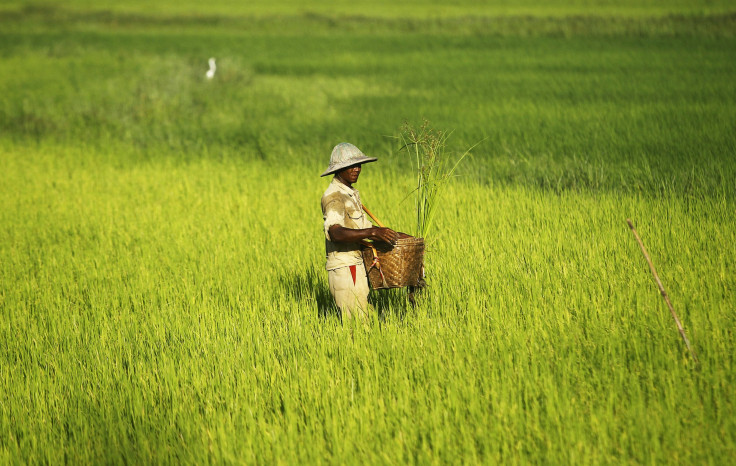Myanmar's Rice Exports Drop 38% This Year, Ambition To Become Major Exporter On Hold

Myanmar may have to rethink its intention of becoming a major rice exporter for now. The Southeast Asian country’s rice exports are way down this year due to global oversupply as well as its own outdated milling technology.
Only 450,000 tons of rice got exported in the first seven months of the fiscal year (April to October), a dramatic 38 percent decrease from the 730,000 tons Myanmar exported in the same period of 2012, according to the Irrawaddy. The slump is the equivalent of about $100 million that the nation will not be making in 2013 due, in part, to weaker harvests caused by poor weather. But the bigger problem is that the global rice export market is already oversaturated, said Samarendu Mohanty, an economist with the International Rice Research Institute (IRRI).
“Global rice prices continue their downward spiral in the face of excess supply from the major exporting countries,” Mohanty said in an IRRI October study. “The good-looking wet-season rice crop in the fields of most rice-growing countries in Asia is also putting additional pressure on the market.”
Even though the Ministry of Commerce said in September that the country could still achieve exports of 1.5 million tons for the fiscal year ending March 2014, a recent report from the U.S. Department of Agriculture (USDA) projected that Myanmar will only have 750,000 tons available for exports after domestic demand is met.
Industry experts had hoped that Myanmar would export as much as 3 million tons this year, a target that is now certainly impossible to achieve.
Neighboring Thailand and India are both major rice exporters. Myanmar hoped to attract investment from those countries to help revamp its outdated planting and milling technologies, but has thus far achieved little success, according to the Irrawaddy.
The Thai Rice Millers’ Association said that potential investors hesitate to move into Myanmar because of continuing logistical problems such as inadequate electricity supply and poor transport infrastructure, which could make exporting costly. There were some signs that Myanmar could benefit from Thailand's own rice subsidy woes, but that benefit alone cannot redeem the rice industry in the long-term.
Thankfully, someone sees hope for Myanmar’s rice -- a business delegation from Taiwan is scheduled to visit Yangon in November, and while the delegation will embrace heavy industry and pharmaceuticals, the focus is expected to be on the rice industry, according to the Taipei Times.
“Although the growth of rice yield has been highly uneven in [Burma], it has a large potential to produce more rice. We will work with [Burma] to develop rice varieties that can boost its food supplies under its climate conditions,” said Tao Wen-lung, the Taiwan association’s secretary-general.
The rice industry is yet another example of the havoc the previous military regime wreaked on the nation during its decades of oppressive ruling. Toward the end of the British colonial era in the 1930s, Myanmar was the world’s biggest rice exporter, dispatching some 7 million tons of rice each year and earning the epithet, the “rice bowl of the world.” It has a long way to go to reclaim the crown, the Irrawaddy reported.
© Copyright IBTimes 2024. All rights reserved.



















